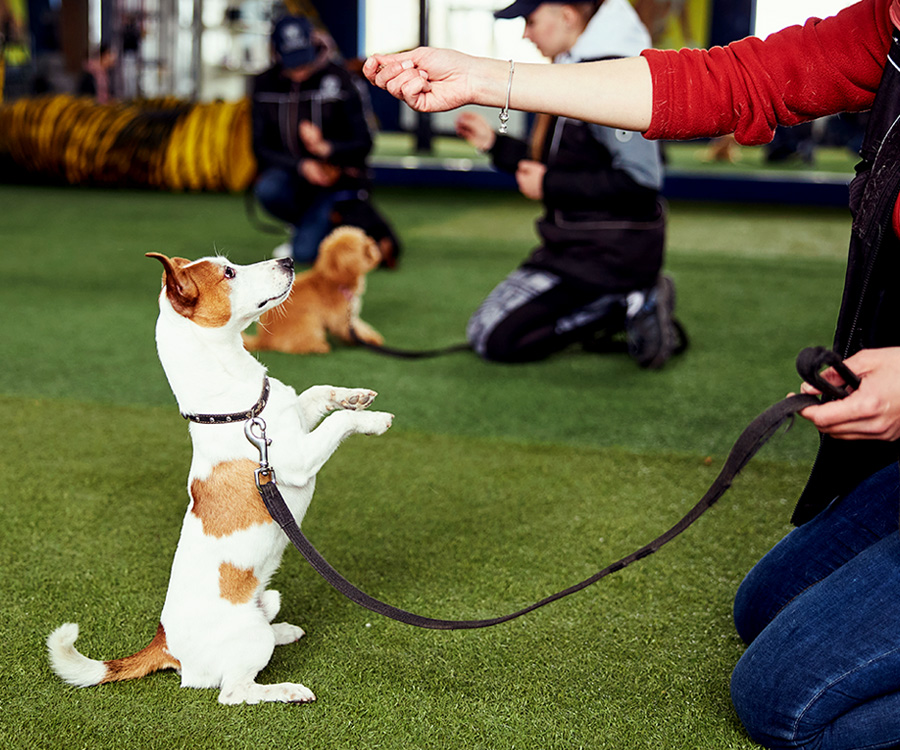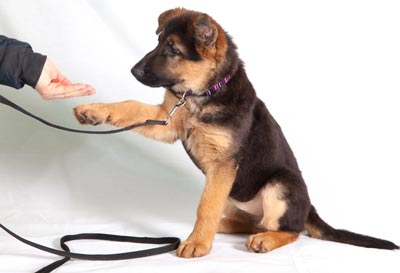How Dog Training Builds Trust and Confidence in Your Dog
How Dog Training Builds Trust and Confidence in Your Dog
Blog Article
Top Pet Training Techniques Every Proprietor Should Know

Favorable Support Strategies
Using favorable support methods is crucial for effective dog training, as it fosters a relying on bond in between the trainer and the pet. This method concentrates on rewarding preferable behaviors as opposed to penalizing unfavorable ones, producing a setting conducive to learning. Rewards can include treats, praise, or playtime, which encourage canines to repeat the actions that make them these incentives.

Additionally, this technique enhances the dog's excitement for training sessions. They are more engaged and responsive when canines associate training with favorable experiences. Dog training. Past prompt actions alteration, favorable reinforcement urges a collective partnership in between the dog and trainer, minimizing stress and anxiety and anxiety
To maximize performance, it is essential to deliver incentives quickly, making sure the dog connects the actions with the reinforcement. Basically, favorable support methods not just produce better-trained pets yet likewise advertise an unified collaboration between pet and owner.
Remote Control Training Technique
The clicker training technique is a very effective strategy that constructs upon the concepts of positive reinforcement by including a distinct audio to mark preferred habits. This approach makes use of a tiny portable gadget that creates a clicking audio, allowing instructors to communicate with their canines in a clear and immediate manner. When a pet carries out a behavior that the owner wants to encourage, the remote control is activated, complied with by a reward, usually in the form of treats or appreciation.
The key to effective clicker training exists in uniformity and timing. It is important to click at the specific moment the preferred behavior takes place, making sure that the pet connects the audio with the action and the succeeding incentive. This approach not only boosts communication however also cultivates a more powerful bond in between the dog and the owner, as it encourages interaction and interaction during training sessions.
Clicker training can be applied to a variety of actions and commands, from standard obedience to a lot more complex tricks. Its flexibility and effectiveness make it a favored strategy amongst professional trainers and family pet proprietors alike, leading the means for a responsive and well-trained canine companion.
Leash Training Fundamentals
Effective chain training is important for making sure a satisfying and secure walking experience for both canines and their owners. A level collar may function for some dogs, while others might profit from a harness that minimizes pulling.
Present your pet to the click site leash slowly, permitting them to discover it in a comfy setting. Practice loose-leash strolling once they are accustomed. This entails satisfying your pet dog for strolling next to you instead of drawing ahead. Usage treats and praise to strengthen wanted behavior, and make sure to stay assertive and tranquil.
If your canine starts to draw, quit walking promptly. Additionally, practice numerous strolling environments to aid your pet adjust to interruptions.
Regular method will solidify your pet dog's understanding of chain rules. Keep in mind that leash training is a continuous process; patience and uniformity will certainly generate the best results, promoting a positive experience for both you and your canine friend.
Socializing Techniques
Socializing is a crucial aspect of canine training that ought to ideally start throughout puppyhood but can be helpful at any type of age. Efficient socialization helps dogs establish confidence and decreases the chance of behavioral issues. To implement successful socializing approaches, expose your pet dog to a variety of settings, individuals, and various other pets.
Beginning with regulated setups, such as young puppy courses or organized playgroups, where young canines can communicate securely. Progressively present your pet to new experiences, consisting of various sounds, surfaces, and tasks. Make sure these encounters are positive and gratifying to establish a complacency.
For grown-up canines or those lacking direct exposure, begin with low-stress scenarios. Short, positive communications with tranquil dogs and pleasant people can develop favorable associations. Use treats and praise to strengthen preferable behaviors throughout these experiences.

Uniformity and Patience
Recognizing the relevance of consistency and persistence in dog training is necessary for achieving long lasting outcomes. Educating a canine is a progressive process that requires a structured approach and unwavering commitment from the proprietor. Each command or habits should be enhanced continually to assist the pet comprehend what is anticipated of them. Inconsistent training can lead to complication, making it challenging for the dog to grasp commands or habits, eventually hindering development.
Dogs, like humans, discover at their very own pace. This promotes a relying on relationship between the dog and owner, urging an extra passionate and prepared student.
To grow uniformity and perseverance, establish a normal training regular, make use of the same commands, and make sure that all member of the family use the very same training principles - Dog training. By doing so, you develop a steady environment conducive to learning, enabling your dog to create and thrive right into a well-behaved friend
Conclusion
Finally, efficient canine training methods, such as favorable reinforcement, remote control training, and appropriate chain training, are important click this link for fostering a healthy and balanced owner-dog connection. In addition, implementing socialization approaches and maintaining uniformity and persistence throughout the training procedure contributes dramatically to a dog's general health. By incorporating these approaches, canine proprietors can assist in the development of well-adjusted, loyal pet dogs, ultimately boosting the lifestyle for both the owner and the dog.
Among the most popular techniques are positive reinforcement, remote control training, and chain training, each offering unique advantages that contribute to a well-behaved canine. As we explore these basic methods, it ends up being obvious that mastering their subtleties can dramatically impact the training experience and the dog's overall habits.Making use of positive support techniques is crucial for reliable canine training, as it cultivates a trusting bond in between the pet dog and the instructor.In verdict, reliable pet training techniques, such as positive support, remote control training, and appropriate leash training, are essential for fostering a healthy and balanced owner-dog partnership. By integrating these methods, canine proprietors can facilitate the development of well-adjusted, loyal animals, eventually boosting the high quality of life for both the canine and the proprietor.
Report this page